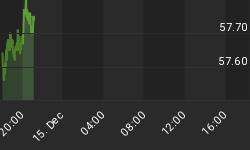I recently came across an interview with David Swensen, the legendary manager of the Yale endowment, in the Wall Street Journal.
Here's the intro, by writer Craig Karmin:
"He isn't a household name. But as the Yale University's endowment's chief investment officer for two decades, David Swensen has earned a reputation as one of the world's savviest and most successful investors.
He pioneered an approach that de-emphasized stocks and bonds while embracing less-traditional fare like hedge funds, private equity, and oil and gas. During his tenure, Yale has had an average annual return of 16% for the past 10 years through June, compared with a 2% average for the Standard & Poor's 500-stock index. Yale's assets more than tripled over that period to $23 billion, trailing only Harvard University's in size."
Even though the Yale endowment has been hammered in this financial crisis -- it's off an estimated 25% -- this is the first losing year since Swensen took over in 1988.
Here's what I found particularly interesting, especially considering the source:
"WSJ: Looking ahead, what investments do you like?
Mr. Swensen: Distressed securities are one of the most interesting opportunities for institutional investors. But returns won't come right away because the credit markets are fundamentally broken. TIPS [Treasury-Inflation Protected Securities] are pretty attractively priced. They promise reasonable returns, and protection against inflation is really important. We may not see it in the next year or two, but the government's massive fiscal stimulus can't help but produce massive inflationary pressures. Stocks also look a lot more attractive than they have for a long time. We prefer higher-quality companies with low leverage."
I've highlighted the critical sentence, which is a fairly obvious conclusion given the current economic backdrop, but nevertheless when gold is mired in one of its corrective periods it's easy to lose sight of the underlying story that will drive gold for years to come.
The U.S. is already saddled with a ridiculous amount of debt, and on top of that the Fed, Congress, and the Treasury have just banded together to generate "massive fiscal stimulus" which will create "massive inflationary pressures."
And this will lead to a massive up trend in gold.
Swensen makes a great point that we may not see this inflationary effect right away, as there is frequently a significant lag between the implementation of monetary policy and its effect on markets. After all, financial markets are non-linear systems, so even though we'd like to see a nice and tidy linear relationship between high inflation and gold, it never ends up being that simple.
But we do have the necessary investment theme in place to drive gold well into the $1,000s, and perhaps even to $2,000. It's just going to take some time for this theme to gain some traction.
I don't think we're going to have to wait too much longer from here, as already there is a highly bullish pattern developing on the monthly chart.

This monthly chart looks extremely promising, as the big correction from $1,033 to $681 has generated a huge amount of available energy for the next hyper-growth period, as evidenced by the monthly fractal dimension moving back up and over 55.
In fact, as soon as gold breaks above the high of the initial surge higher -- at $890 -- then we'll know that the next big up trend is off and running.
In the short-term, gold is not looking so good, as this has been quite a bearish short-term consolidation pattern.

Generally when a market goes sideways right at the lows then it's setting up the next drop. The last drop carried gold down about $50. If gold were to have a similar drop of around $50 now then it would take prices right down to the target for this correction at $772.
So unless gold makes a strong move back over $840 -- which looks unlikely at this point -- then we should continue to anticipate a drop down to $772, where we'll look to get back into long positions.
A subscription to the Fractal Gold Report will give you access to daily updates on this very promising developing pattern in gold.















